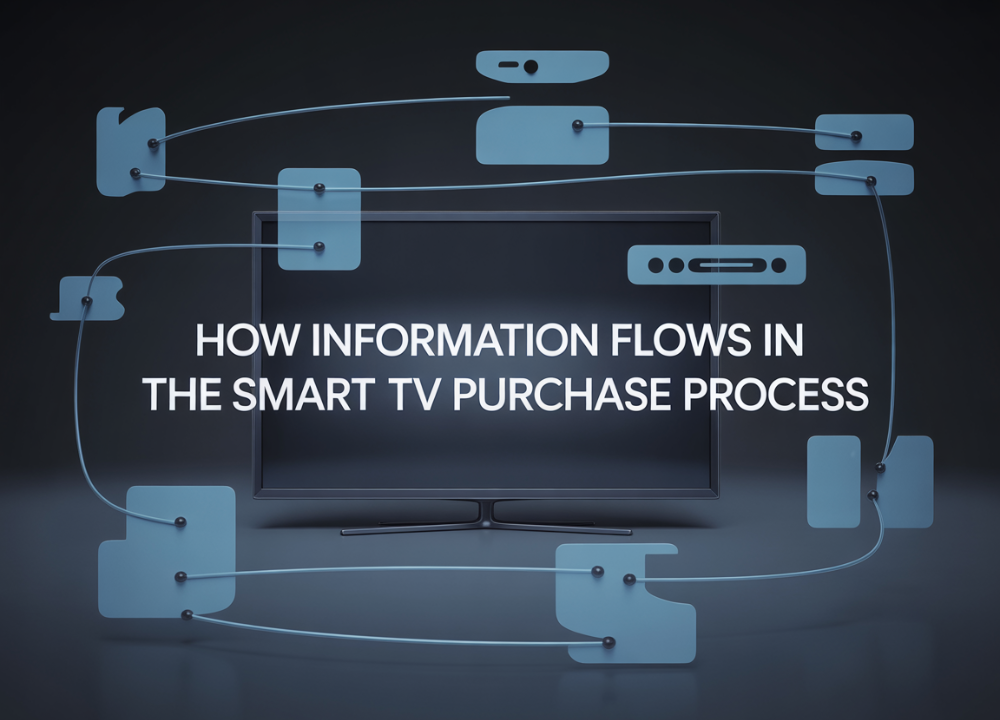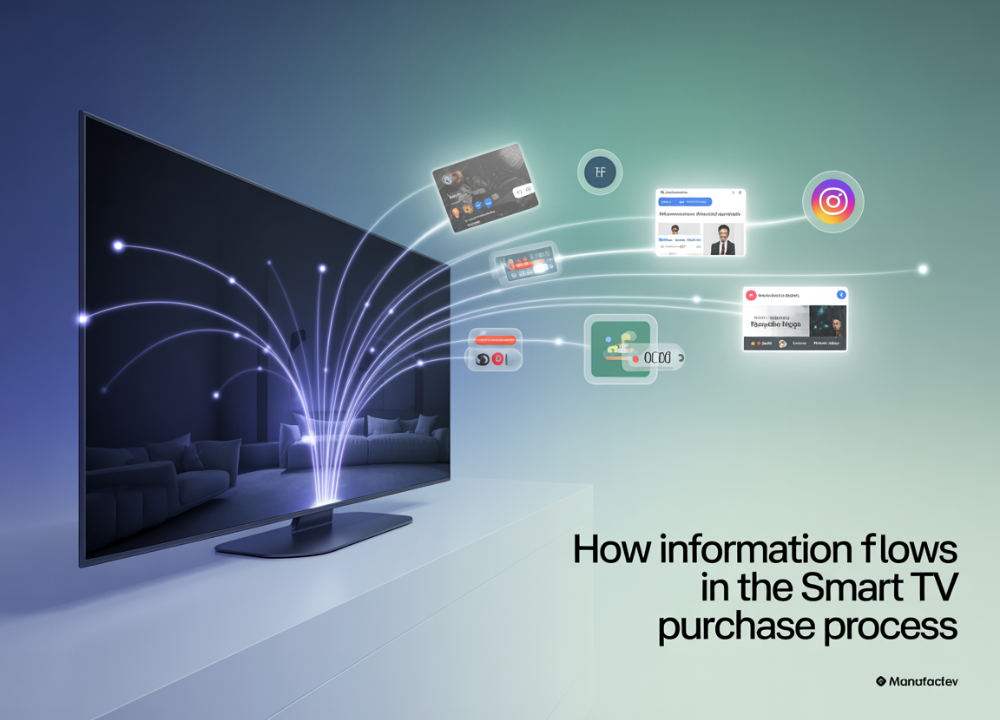From the moment you decide to buy a smart TV to how it reaches your doorstep and even beyond, a complex yet fascinating information flow ensures every step of the process happens seamlessly. This intricate web of communication between customers, stores, manufacturers, and distribution centers is what keeps the modern retail machine running smoothly.
This blog unpacks how information flows in the smart TV purchase process, offering a clearer understanding of how each entity communicates and their roles in moving the product efficiently to end consumers like you.
Understanding the Role of Information flows

Every smart TV purchase relies on the exchange of critical information at multiple levels to ensure efficiency, accuracy, and customer satisfaction. Whether it’s capturing the purchase at the point of sale (POS), signaling inventory needs to manufacturers, or coordinating with distribution centers, this flow is what powers modern retail operations.
We’ll walk you through five critical stages of information flow during a smart TV purchase and highlight the significance of each in ensuring a smooth buying experience.
Key Information Flows During a Smart TV Purchase
1. Customer to Store
This is where the information flows begins. At the point of purchase, the customer provides essential input by either selecting a specific smart TV model or browsing through the available options in the store.
How it works:
- The purchase information is entered into a POS terminal, recording key data such as the purchased product, quantity, price, and transaction time.
- This data is used for inventory tracking and to initiate the next steps of Information Flows.
Example:
A customer walks into an electronics retailer, picks out a 55-inch 4K Smart TV, and completes the purchase. The transaction details are immediately captured and sent to the store’s database.
2. Store to Manufacturer
Once the transaction is processed, the store communicates with the manufacturer through the POS system. This data allows the manufacturer to adjust production or inventory levels to meet future demand.
Why it matters:
- The manufacturer gains insight into sales trends and consumer preferences.
- It ensures that popular models remain in supply and adapts production schedules accordingly.
Example:
After the sale of a specific TV model, the store’s system notifies the manufacturer about declining inventory levels, prompting a replenishment cycle.
3. Buyer to Manufacturer
Beyond sales data, large retail chains or corporate customers often place bulk inventory orders directly to manufacturers. This direct interaction helps streamline supply chain operations for high-demand products.
Insights included:
- Corporate inventory orders often specify models, quantities, and delivery timelines, ensuring an efficient replenishment process.
Example:
A retail chain notices that customers are heavily buying smart TVs over the holiday season. To stay ahead, the chain places an order for an additional 500 units to the manufacturer well in advance.
4. Manufacturer to Distribution Center and Buyer
Once the manufacturer fulfills an order, shipping details are sent to both distribution centers and the end buyers. This data is known as an Advanced Shipping Notice (ASN), providing transparency about the shipment’s contents and timeline.
Key details in an ASN include:
- Product specifications
- Shipment quantity
- Expected delivery date
Example:
The manufacturer produces the 500 smart TVs requested and sends them to a nearby distribution center. An ASN is sent to the retailer notifying them of the incoming inventory’s arrival date and time.
5. Store to Distribution Center
Even after a direct connection from manufacturers, stores often communicate with distribution centers to manage delivery schedules, inventory levels, and logistics.
What happens here?
- Stores request delivery schedules to align with their storage capacity and sales forecasts.
- Frequent communication ensures just-in-time delivery, reducing overstocking or inventory shortages.
Example:
A retailer notices an uptick in sales of top-tier smart TVs and requests expedited deliveries from the distribution center to meet customer demand.
6. Store to Buyer
Finally, the store completes its Information Flows by keeping customers informed and engaged. Frequent and direct communication through emails, SMS, or app notifications provides updates such as shipping timelines or restocking details for popular items.
Tools used:
- Notifications about order status (e.g., “Shipped,” “Out for delivery”).
- Recommendations for related accessories like wall mounts or sound systems.
Example:
A customer is notified that their smart TV has shipped and receives a tracking link via email to monitor its progress directly to their doorstep.
Why Efficient Information Flows Matters
Without efficient information flows, the smart TV purchase process would be riddled with delays, inaccuracies, and dissatisfied customers. Here’s why a streamlined process is essential:
- Better Inventory Management: Ensures retail stores and manufacturers can predict demand and prevent stockouts.
- Improved Customer Experience: Transparent communication about products and deliveries reduces frustration and builds customer trust.
- Faster Supply Chain: Seamless coordination across the supply chain ensures timely replenishment and delivery.
- Data-Driven Decisions: Real-time data about sales and inventory empowers manufacturers and retailers to optimize their operations.
Efficient Information Flows is the backbone of retail success, especially in the competitive electronics market. By prioritizing communication and leveraging modern tools, companies can ensure smoother transactions and happier customers.
Conclusion
The smart TV purchase process exemplifies how complex yet vital Information Flows is in modern retail. Whether you’re a buyer or a retailer, understanding these stages can help you appreciate the coordination that goes into ensuring you get your hands on the latest technology quickly and reliably.
Looking for ways to improve your store’s information flows or streamline your supply chain communications? Start by evaluating how your data flows at each stage of the purchase process and explore modern POS systems or inventory management tools that can keep up with demand.
- Best Tea-Making Accessories & Essential Tools 2025 Guide for Tea Lovers - September 23, 2025
- Best Electric Golf Scooters 2025 | Carry Your Bag in Style on the Course - September 21, 2025
- Best Gadgets 2025 Ultimate Guide by Gadget9Prom - September 15, 2025


